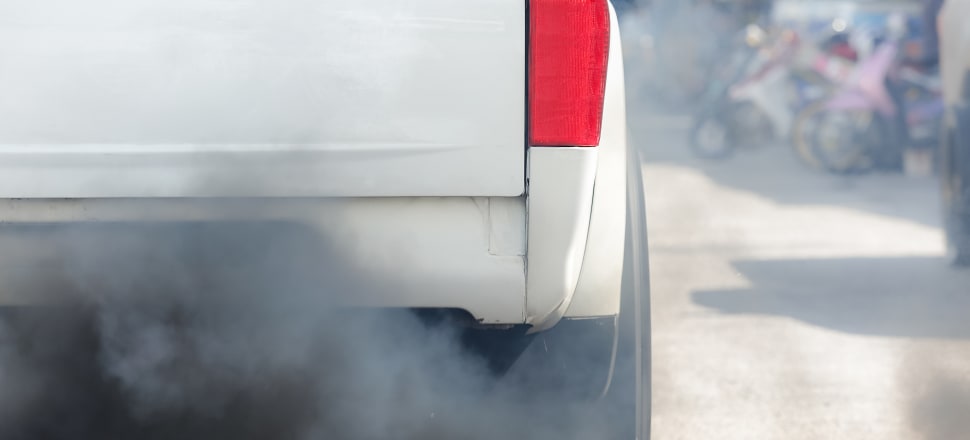
A heavy diesel truck costs society $1 in health and productivity losses due to air pollution for every kilometre it drives, Marc Daalder reports
A report quietly released by the Ministry of Transport in July shows tighter regulation of vehicle imports for air pollution could save society billions of dollars over the next three decades.
If New Zealand implemented a requirement that new vehicle imports meet Euro 6/VI air pollution standards, the costs would run to between $22 million and $236m but the benefits would be between $1.1b and $8.3b.
As it stands, less than one in five new vehicles entering the fleet meets the Euro 6/VI standard and they make up just 3 percent of the overall fleet. Baseline projections indicate Euro 6/VI will continue to make up a minority of new imports until 2028 or later.
Implementing the standard would require 100 percent of new imports to meet the standard from the set start date. The earlier the date, the greater the net benefit. A 2024 introduction would save $8 billion, while waiting until 2030 would reduce savings to $1 billion.
The European Union adopted the standard in 2015 (around when New Zealand adopted its current Euro 5/V rule) and is looking to introduce an even tougher set of requirements, Euro 7, as early as 2025.
Transport Minister Michael Wood said he had considered the report and it's important that New Zealand stay up to date with air pollution standards.
"I am continuing to consider the benefits of further regulation in this area and I'll be looking to consider that further in the coming months," he said.
Green Party transport spokesperson Julie Anne Genter told Newsroom she was shocked the standard hadn't yet been implemented, because it was ready when she was associate minister of transport under the last government in 2017.
"Europe is basically moving on to Euro 7. They have emissions-free zones because they've realised just how damaging diesel particulates and nitrogen dioxide are to the people who live and work in and around busy roads," she said.
Research has increasingly shown that even low levels of air pollution are associated with respiratory and cardiovascular hospitalisations and deaths, asthma and a host of other conditions.
"I don't know if New Zealanders realise just how much it's hurting us," Genter said. "We have higher rates of childhood asthma and there's a clear connection between the lack of regulation on diesel vehicles. Hospitalisations and over 10,000 cases of childhood asthma can be directly linked to poor air quality."
This is how implementing the standard could have a net benefit, even if it marginally raises the cost of new vehicles by $300 for petrol cars, $900 for diesel cars and $4000 for diesel trucks. The costs are as high as $236 million if the standard came into effect next year, but will produce billions in savings through avoiding healthcare costs and improving productivity.
Diesel vehicles are responsible for the bulk of the social cost from air pollution. About 45 percent of the total cost comes from diesel trucks and buses, 29 percent from diesel utes and vans and 8 percent from diesel cars. The remaining 18 percent is attributed to petrol cars, which make up three quarters of all vehicles in the fleet.
The greater harm comes because it is harder to filter pollutants from the exhaust of diesel vehicles. Diesel vehicles are also more likely to release more pollution in real world experiments than when emissions tested.
Diesel cars that meet Euro 5/V standards are meant to release no more than 180 milligrams of nitrogen dioxide per kilometre driven, but in the real world actually emit 766 mg/km.
Euro 6/VI drops the standard to 80 mg/km with real world values of 433 mg/km, with more stringent sub-standards like Euro 6d cutting harmful emissions even more.
Petrol cars report real world emissions much closer to the standards when tested. Euro 6/VI petrol vehicles released between 45 and 83 mg/km, against a standard of 660 mg/km.







